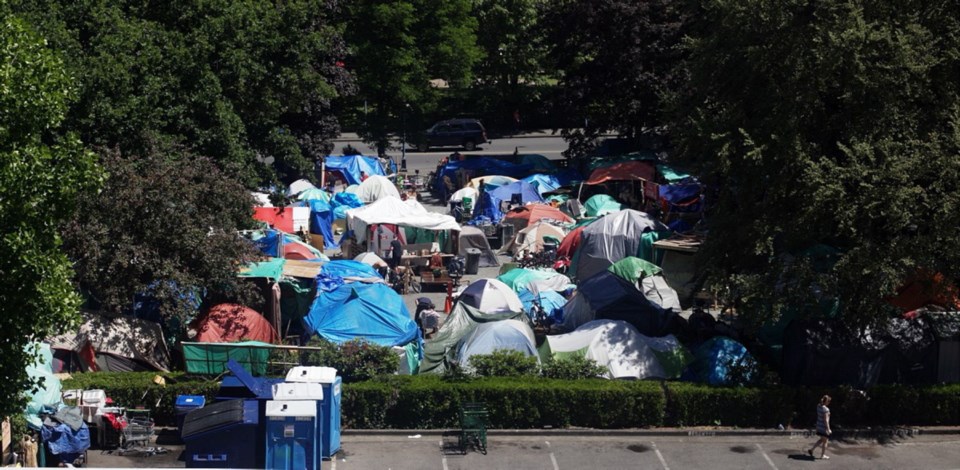Poverty and homelessness are not just big-city problems, say local government officials gathered in Victoria this week for the Union of B.C. Municipalities convention.
“We have panhandlers in Powell River. That’s pretty unusual,” Powell River Coun. Rob Southcott told a news conference organized by the B.C. Poverty Reduction Coalition outside the Victoria Conference Centre.
In Powell River, food bank use is up, kids are showing up at school hungry, and as winter approaches some people are living in the bush, Southcott said.
While the city of about 13,000 people on the northern tip of the Sunshine Coast has been experiencing a building boom, the vacancy rate is estimated at near zero. “It is a community that is full of wealth, but it also is a community that has a higher poverty rate than the provincial average,” Southcott said.
Southcott was one of several elected officials at the conference calling on the provincial government to adopt a poverty-reduction plan complete with legislated targets and deadlines.
B.C. is the only province in the country not to have a formal poverty-reduction plan. Advocates say such a plan, including targets and timelines, would raise income-assistance rates and the minimum wage, improve food security, build more social housing, provide universal child care, support training and education, and back community health care.
Southcott’s comments were echoed by councillors from communities around the province.
Hilary Marks, of the Together Against Poverty Society, experienced homelessness first-hand.
“It’s awful. It’s tireless. It’s degrading. It’s isolating. It’s humiliating,” Marks said.
“People can’t sleep. They can’t eat. They get kicked in the gut to get woken up by our local police officers. It’s really awful. We have a crisis here.”
The word “crisis” was heard a lot both during the news conference and during panel discussions on poverty and homelessness. “We don’t need food banks and we don’t need shelters. We need housing,” Marks said.
“One in five of our children is living in poverty, and that simply is not good enough,” said Vera LeFranc, a first-term Surrey councillor. Adopting such a strategy is “a basic first step,” LeFranc said, adding that Surrey adopted its strategy in 2012.
“It is framed around transportation, housing, income and supports. What we find is that moving the needle on any one of these makes a huge difference.”
Nelson has a 21 per cent child-poverty rate, and in the past year experienced an eight per cent increase in food-bank usage, said Nelson Coun. Valerie Warmington.
“What we’re realizing is it’s not just people who aren’t working. This poverty is eating into the middle class. Full-time working people are not able to make ends meet and are not able to maintain their health because they can’t provide decent food for themselves or decent shelter for their families,” Warmington said.
“The province needs to step in and provide some guidance and some structure and some support so that we can help our communities remain healthy.”
Without a poverty strategy, governments will face increasing costs for health care, policing and other services, she said.
Twenty-four municipalities have passed resolutions in support of a poverty-reduction plan in B.C. with legislated targets and timelines.
“It’s hard to believe that I have to say this still, but poverty is bad for all of us. Homeless people will die half a lifetime younger. Kids in poverty won’t grow to their full potential,” said Trish Garner, of the B.C. Poverty Reduction Coalition.
“Our province is suffering economically by keeping all of us in this situation. Eight to nine billion dollars per year is what we’re paying for poverty costs at the moment. A poverty-reduction plan is just half that at $3 billion to $4 billion,” Garner said.



